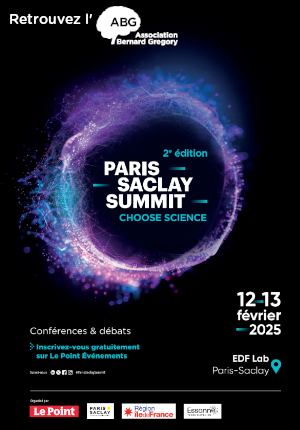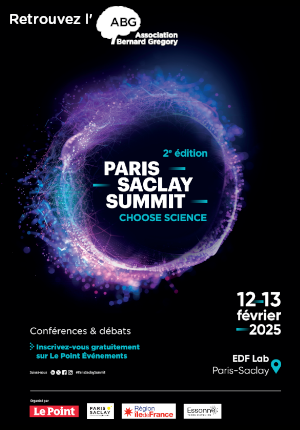High-Performance Electron Spin Resonance Spectroscopy Enabled by High-Temperature Superconductors
| ABG-128139 | Thesis topic | |
| 2025-01-26 | Public/private mixed funding |

- Physics
- Electronics
Topic description
Abstract:
Current electron spin resonance (ESR) spectrometers are limited by low sensitivity and large sample volume requirements, restricting investigations at the nanoscale. This PhD project addresses these limitations through the development of a highly sensitive ESR spectrometer leveraging high-temperature superconducting (HTS) resonators. This innovative approach promises to expand the capabilities of ESR for investigating quantum materials, spin dynamics, and other phenomena at the nanometer scale. The project combines cutting-edge microwave engineering, thin film microfabrication, and advanced quantum measurement methodologies. This represents a significant step in bringing ESR technique to the nanoscale
Context :
Electron Spin Resonance (ESR) is a powerful technique for probing the magnetic properties of materials at the atomic level, offering crucial insights into spin states, local environments, and interactions. While fundamental in chemistry, biology, physics, and particularly quantum science, current commercial ESR systems suffer from inadequate sensitivity and large sample volume requirements, hindering investigations of nanostructured materials and limiting applications. The advent of superconducting quantum technologies offers new avenues for overcoming these limitations. This PhD project aims to harness the potential of high-temperature superconductors (HTS) to develop a next-generation ESR spectrometer, promising enhanced sensitivity and operation across a wider temperature range than traditional systems.
Research topic :
This PhD project will develop a novel, high-sensitivity ESR spectrometer utilizing advanced HTS resonators. The core objective is to achieve at least a 1-2 order-of-magnitude improvement in spin sensitivity compared to commercial systems. Specific research areas include:
Design and Fabrication: Pulsed Microwave Bridge Development: Benchmark and Validation: Exploring Innovative Samples
This project is expected to:
Achieve a significant, quantifiable enhancement in ESR spin sensitivity, thus opening new avenues for exploring nanoscale phenomena. - Develop new pulsed ESR methodologies, thereby expanding capabilities to study spin dynamics and quantum phenomena in novel materials.
- Generate high-impact publications and presentations at international conferences, highlighting both technological advancements and new scientific understanding.
- Provide the PhD student with state-of-the-art technical expertise, preparing them for a leading career in cutting-edge quantum technologies research."
Funding category
Funding further details
Presentation of host institution and host laboratory
The successful candidate will join the Magnetism (MAG) Group at the IM2NP Laboratory which is a renowned research center in Marseille, with all facilities and expertise in materials science, nanotechnology, and condensed matter physics needed. Our environment allowed innovation and interdisciplinary collaboration, offering state-of-the-art tools for spectrometer development and advanced instrumentation.
As part of this project, the candidate will have access to IM2NP’s state-of-the-art platforms for electromagnetic simulations, cryogenic setups, and high-frequency instrumentation. Collaboration within the INFRANALYTICS national platform enhances access to high-performance analytical tools and fosters interactions with experts in spectroscopy and instrumentation across France. This integrated network offers a unique opportunity to work at the frontier of quantum technologies while benefiting from a robust infrastructure for innovation
More information on https://www.im2np.fr/fr/equipe-magnetisme-mag
Beyond the laboratory, Marseille and Provence offer an environment for both professional and personal fulfillment. Marseille, France’s second-largest city, is a vibrant Mediterranean hub renowned for its rich cultural heritage, dynamic lifestyle, and thriving scientific community
PhD title
Country where you obtained your PhD
Graduate school
Candidate's profile
The candidate must hold a Master degree in physics, nanosciences, or an equivalent, by the end of summer 2025. He/she should have a solid background in experimental condensed matter and quantum physics and be strongly motivated in instrumental development.
Skills in Python coding would also be appreciated.
Vous avez déjà un compte ?
Nouvel utilisateur ?
Get ABG’s monthly newsletters including news, job offers, grants & fellowships and a selection of relevant events…
Discover our members
 SUEZ
SUEZ  ANRT
ANRT  Groupe AFNOR - Association française de normalisation
Groupe AFNOR - Association française de normalisation  MabDesign
MabDesign  Aérocentre, Pôle d'excellence régional
Aérocentre, Pôle d'excellence régional  Institut de Radioprotection et de Sureté Nucléaire - IRSN - Siège
Institut de Radioprotection et de Sureté Nucléaire - IRSN - Siège  CASDEN
CASDEN  Tecknowmetrix
Tecknowmetrix  ADEME
ADEME  PhDOOC
PhDOOC  ONERA - The French Aerospace Lab
ONERA - The French Aerospace Lab  Institut Sup'biotech de Paris
Institut Sup'biotech de Paris  Généthon
Généthon  TotalEnergies
TotalEnergies  Nokia Bell Labs France
Nokia Bell Labs France  Ifremer
Ifremer  MabDesign
MabDesign  Laboratoire National de Métrologie et d'Essais - LNE
Laboratoire National de Métrologie et d'Essais - LNE  CESI
CESI







